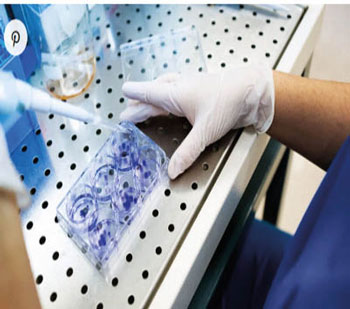Multiple myeloma is the second-most-common blood cancer, but is currently regarded as not curable.
In multiple myeloma, plasma cells, a part of the immune system, multiply out of control and prevent the formation of other blood cells.
Current treatments include chemotherapy and stem cell transplants. In phase 2 trials of a new treatment, talquetamab, around 73% of participants showed a complete or partial response, with 30% cleared of cancer cells.
The results suggest that talquetamab could give hope to patients with refractory myeloma. Multiple myeloma is a cancer of plasma cells. These cells, made in the bone marrow, are a vital part of the immune system.
The disease, which affects around one in 132Trusted Source people in the United States, is rarely diagnosed in people under the age of 65. Healthy plasma cells produce antibodies to help people fight disease.
Cancerous plasma cells make abnormal antibodies called M-proteinsTrusted Source that do not protect the body from infections. The myeloma cancer cells also build upTrusted Source in the bone marrow and form tumors.
The abnormal plasma cells are made from stem cells in the bone marrow. As their number increases, the number of red blood cells, white blood cells and platelets, which are made from the same type of stem cell, decreases.
Treatments for multiple myeloma Initial treatment for multiple myeloma may involve chemotherapy, immunotherapy, and corticosteroid treatment. Some people may then receive a stem cell transplantTrusted Source, using their own or donor cells, to help them manufacture healthy blood cells.
Other treatments target the symptoms to improve the patient’s quality of life. Doctors can treat and control the disease, but it is currently regarded as not curable. If myeloma stops responding to treatment, it is called refractory myeloma.
“Myeloma affects around 6,000 people in the United Kingdom every year, causing more thaneight deaths each day. New therapies are urgently needed to help people with treatment-resistant disease.”Dr. Marianne Baker, research information manager at Cancer Research UK Now, trials of talquetamab have shown very promising results in people with refractory myeloma.
Following treatment with the immunotherapy drug in the Mount Sinai Health System trial, almost three-quarters of the participants showed improvement, with 30% having a complete response to the drug.
The results of the phase 1 trial appeared in the New England Journal of Medicine, and the phase 2 trial results were presented at the annual meeting of the American Society of Hematology.










